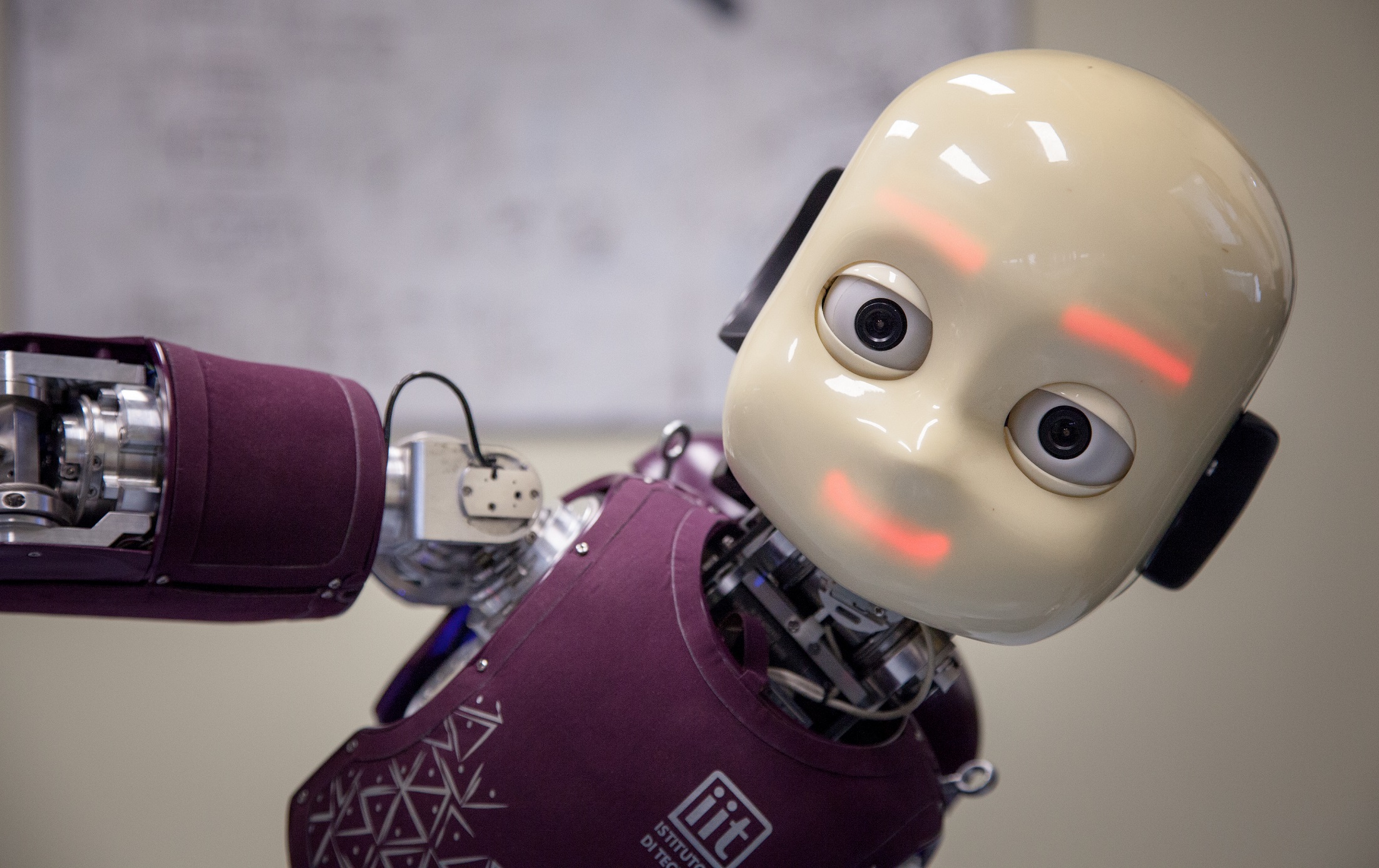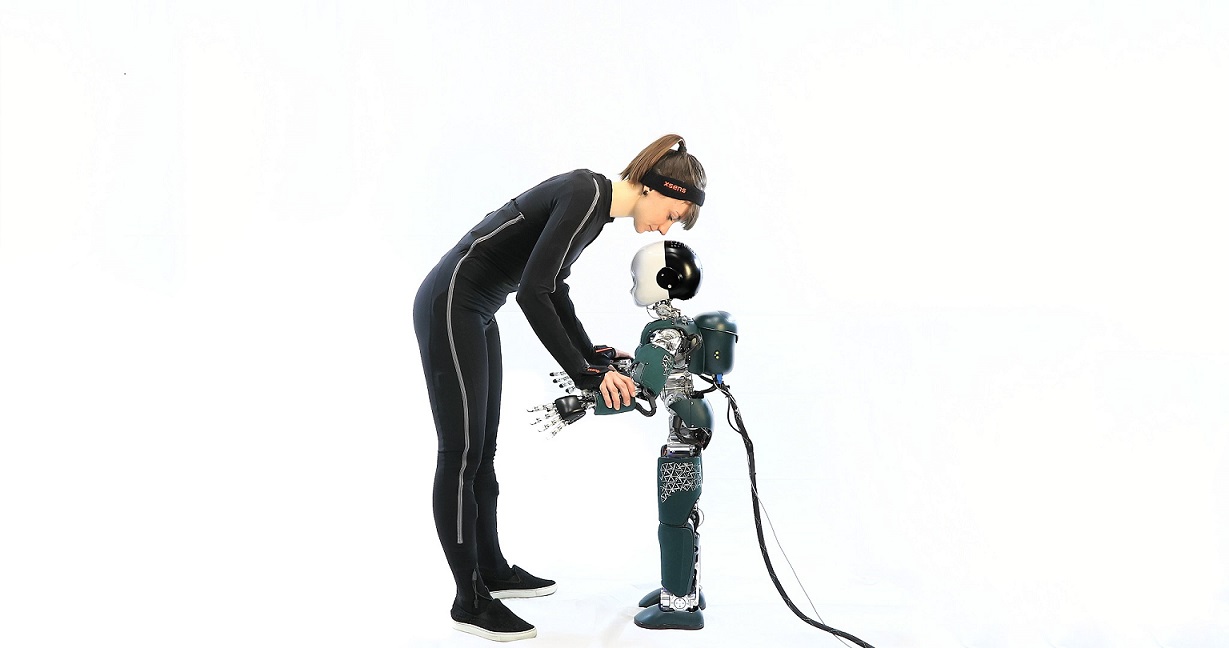
Robohub.org
Digital symbiosis lets robot co-workers predict human behaviour

Robot co-workers could help out with repetitive jobs and heavy lifting by reacting to human actions. Image credit – Italian Institute of Technology
by Anthony King
Stephen Hawking and Elon Musk fear that the robotic revolution may already be underway, but automation isn’t going to take over just yet – first machines will work alongside us.
Robots across the world help out in factories by taking on heavy lifting or repetitive jobs, but the walking, talking kind may soon collaborate with people, thanks to European robotics researchers building prototypes that anticipate human actions.
‘Ideally robots should be able to sense interactional forces, like carrying a table with someone,’ said Francesco Nori, who coordinates the EU-funded An.Dy project which aims to advance human-robot collaboration. ‘(Robots) need to know what the human is about to do and what they can do to help.’
In any coordinated activity, whether dancing or lifting a table together, timing is crucial and that means a robot needs to anticipate before a person acts.
‘Today, robots just react – half a second of anticipation might be enough,’ said Nori, who works at the Italian Institute of Technology which is renowned for its humanoid robot called iCub, that will be educated in human behaviour from data collected during the An.Dy project.
The data will flow from a special high-tech suit that lies at the heart of the project – the AndySuit. This tight suit is studded with sensors to track movement, acceleration of limbs and muscle power as a person performs actions alone or in combination with a humanoid robot.

A special high-tech suit known as the AndySuit allows a person to perform actions alongside a robot. Image credit – Italian Institute of Technology
This sends data to a robot similar to iCub so that it can recognise what the human is doing and predict the next action just ahead of time. The collaborative robot – also known as a cobot – would then be programmed to support the worker.
‘The robot would recognise a good posture and a bad posture and would work so that it gives you an object in the right way to avoid injury,’ explained Nori, adding that the cobot would adapt its own actions to maximise the comfort of the human.
The robot’s capabilities will come from its library of pre-programmed models of human movement, but also from internal sensors and a mobile phone app. Special sensors that communicate with the iCub are also being developed for the AndySuit, but at the moment it is more appropriate for the robotics lab rather than a factory floor.
To get the robot and AndySuit closer to commercialisation it will be tested in three different scenarios. First, in a workspace where a person works beside a cobot. Second, when a person wears an exoskeleton, which could be useful for workers who must lift heavy loads and can be assisted by a robust metal skeleton around them.
A third scenario will be where a humanoid robot offers assistance and could take turns performing tasks. In this situation, the robot would look like the archetype sci-fi robot; like Sonny from the film iRobot.
Silicon sidekick
A different project will see a human-like prototype robot reach out a helping hand to support technicians, under an EU-funded project called SecondHands led by Ocado Technology in the UK.
‘Ask it to pass the screw driver, and it will respond asking whether you meant the one on the table or in the toolbox.’ Duncan Russel, Ocado Technology
Ocado runs giant automated warehouses that fulfil grocery orders. Its warehouse in Hatfield, north of London, is the size of several football fields and must be temporarily shut down for regular maintenance.
Duncan Russell, research coordinator at Ocado Technology explained: ‘Parts need to be cleaned and parts need replacing. The robot system is being designed to help the technicians with those tasks.’
While the technician stands on a ladder, a robot below would watch what they are doing and provide the next tool or piece of equipment when asked.
‘The robot will understand instructions in regular language – it will be cleverer than you might expect,’ said Russell. ‘Ask it to pass the screw driver, and it will respond asking whether you meant the one on the table or in the toolbox.’
The robot will feature capabilities straight from the Inspector Gadget cartoon series. An extendable torso will allow it to move upwards and telescopic limbs will give it a three metre plus reach.
‘The arm span is 3.1 metres and the torso is around 1.8 metres, which gives it a dynamic reach. This will allow it to offer assistance to technicians up on a ladder,’ said Russell.
This futuristic scenario is being brought to reality by research partners around Europe. Robotics experts at Karlsruhe Institute of Technology in Germany have built a wheeled prototype robot. The plan is for a bipedal robot to be tested in the Ocado robots lab in Hatfield, and for it to be transferred to the warehouse floor for a stint with a real technician.
Karlsruhe is also involved in teaching the robot natural language and together with the Swiss Federal Institute of Technology in Lausanne it is developing a grasping hand, so the helper robot can wield tools with care. The visions system of this silicon sidekick is being developed by researchers at University College London, UK.
The handy robotic helper could also do cross-checking for the maintenance person, perhaps offering a reminder if a particular step is missed, for example.
‘The technician will get more done and faster, so that the shutdown times for maintenance can be shortened,’ said Russell.
More info:
An.Dy
SecondHands
tags: c-Research-Innovation, iCub




